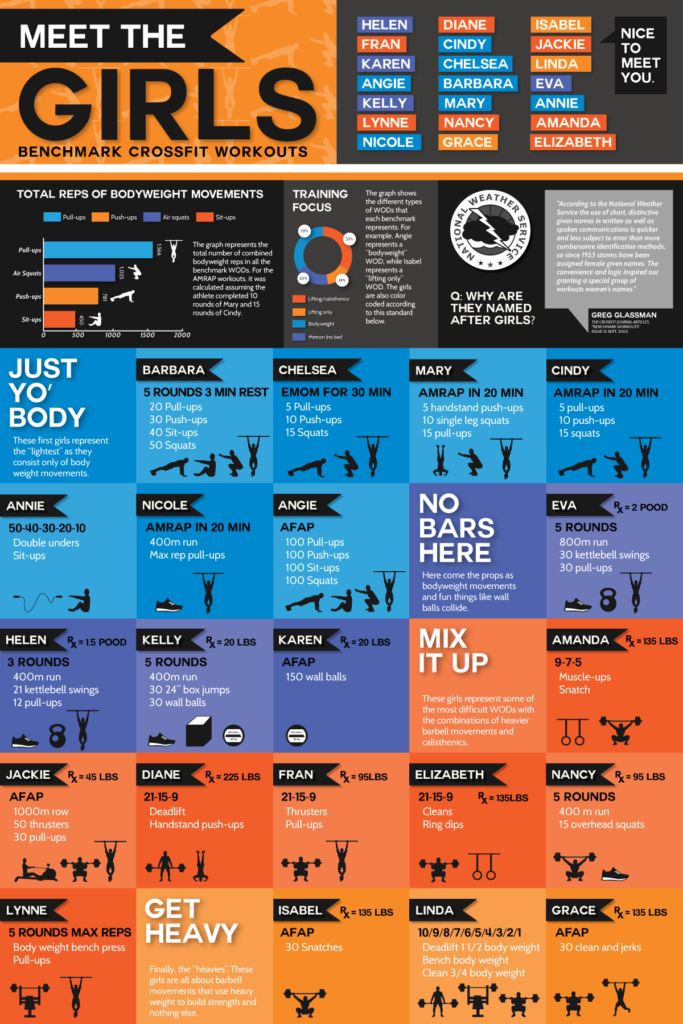Benchmark Workouts
by Erik Castiglione
In a recent blog post we covered the structure of our programming. We purposely leave a few “open” days, on which we can train any number of things from gymnastics, to longer conditioning workouts, to benchmark workouts. What are benchmarks, and why do we train them?
A benchmark is defined as “a standard or point of reference against which things may be compared or assessed.” In the case of fitness, there are many benchmarks. The easiest to measure are single modality benchmarks, such as our max effort lifts, a 1k row, or a mile run, etc. As the name indicates, single modality means it’s “one thing.” In this case, a single movement.
Movements can be considered local, regional, global, or cyclical. Local movements involve a small part of the body. Regional movements involve more of the body, and global movements involve the entire body. An excellent example of this is the overhead press series: a strict press is a local movement, a push press is a regional movement, and a thruster is a global movement. Cyclical movements are what CrossFit refers to as “monostructural” movements. This includes things like running, rowing, biking, etc.
When we combine these different types of movements into a workout, we have what’s called a “mixed modality” workout. With these, it can be a little more difficult to gauge progress. This is where “The Girls” come in – these are the workouts that made CrossFit famous. “Fran” is the quintessential CrossFit workout. Each of these “Girls” serves as a benchmark.
Each of these benchmarks tests a different component of fitness. The simplest benchmarks are all bodyweight movements – “Cindy,” “Chelsea,” and “Angie” all have pull-ups, push-ups, and air squats in them. “Chelsea” is an EMOM style workout, which is a test of muscular endurance. For how many minutes can you complete 5 pull-ups, 10 push-ups, and 15 squats? In “Cindy,” the rep scheme is the same as “Chelsea,” but because it’s an AMRAP, you can crank through the rounds as fast as you are able. This adds a cardiovascular component to the workout and tests your muscular endurance while under metabolic fatigue. In “Angie,” you perform 100 reps of each movement before moving on to the next. Since you don’t get to switch movements, this is a test of your muscular capacity. Capacity is similar to endurance, but it’s more about how much you can do in 1 set before failing, as opposed to how long you can keep going with smaller sets.
When we move beyond just bodyweight movements and add in some weightlifting, we enter the realm of super high heart rates and feelings of “hitting the wall.” These are the true “high intensity” workouts for which CrossFit is known such as “Fran” and “Diane.” Both workouts combine weightlifting movements with high skill gymnastics. Thrusters are a global push, and kipping pull-ups are a regional pull. Deadlifts are a regional pull, but when performed at a heavy enough weight, can really spike the heart rate. Handstand push-ups are a local or regional push, depending on whether they are strict or kipping. If you’ve mastered these movements, you can push through “Fran” and “Diane” quickly and are only limited by your anaerobic capacity. When you cross your anaerobic threshold, that’s the feeling of “hitting a wall” when you’re forced to slow down. This week, we performed “Nancy,” which is a test of our aerobic endurance, and our ability to maintain a tight core and overhead squat position under aerobic fatigue.
Most of our workouts help build these components of fitness – muscular endurance, muscular capacity, anaerobic capacity, aerobic endurance, etc. We also train specific movements to develop proficiency in them – I think we can all agree that overhead squats take time to master. Since we spend most of our time building rather than testing, it’s nice to check out progress every now and again. The benchmark workouts provide us an opportunity to do that. And, considering that we had 18 PR’s in “Nancy,” 8 of which included athletes using heavier weight AND moving faster, it shows us that our program is working. (We had a total of 44 athletes perform the “Nancy.” 18 PR’d, 1 person used a heavier weight than last time and was a little slower, 9 didn’t record scores, and 14 performed it for the first time ever.) Test, build, and retest – this is how we show you your hard work pays off.

